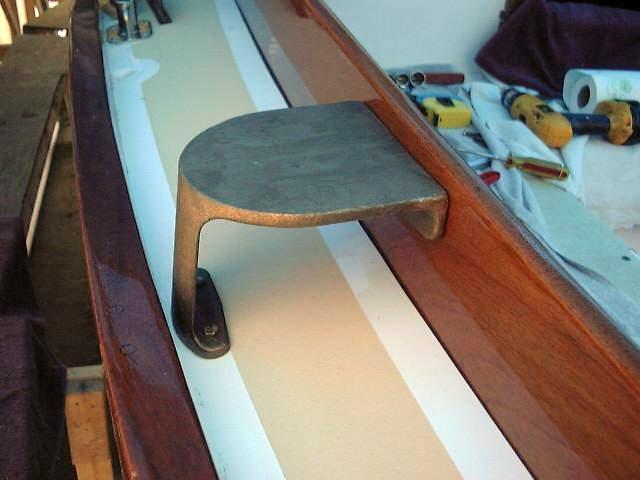 It's been a long day, but I'm happy to say that Magic is back in the water and floating. The past few days have been a blur of working until 9 or 10 PM and culminated last night when I pulled the end of the boat shed off so the truck could get the boat. It was strange being able to see the boat from outside the shed, but it reminded me of a cocoon opening up and spitting out a moth. I called it a day at dark and went back to the house to compile a final list of things I needed to do before the truck came to pick up the boat at 10:30 the next morning.
It's been a long day, but I'm happy to say that Magic is back in the water and floating. The past few days have been a blur of working until 9 or 10 PM and culminated last night when I pulled the end of the boat shed off so the truck could get the boat. It was strange being able to see the boat from outside the shed, but it reminded me of a cocoon opening up and spitting out a moth. I called it a day at dark and went back to the house to compile a final list of things I needed to do before the truck came to pick up the boat at 10:30 the next morning.I got going at 5:00 AM because I still had a ton to do to get everything ready for hauling. I won't go into too many details, but I had way too many tools lying around and way too much crap laying on the floor of the boat shed, so I spent the first two hours getting everything organized and cleaned up.
Once I was satisfied that the truck would be able to get into the shed to retrieve the boat, I rigged and labeled all the standing rigging and put the jib and auxillary halyard on. I wrapped everything up with foam wrap and duct tape so everything would stay together for the trip. I pulled the stanchions off because there was so little clearance between the top of the stanchions and the boat shed roof. We got the boom aboard and secured just as the truck from Miles Marine showed up right on time.
I'm always amazed watching boat haulers do their thing because it just seems like such a bad idea to remove all but three jackstands and have the entire boat teetering there while they slide the wishbone trailer around the keel and under the boat. It took about an hour to get the boat loaded because of the tight quarters in the boat shed, but once on the trailer they slowly eased it out of the shed without issue. Next we loaded the mast onto the mast rack and I jumped on board to put the stanchions back on and that was it... They were off.
I went back to the house and had lunch and then drove up to Fay's Boatyard where I hoped the boat would be. On the way up I half expected to see a fiery crash with Magic crushed on the side of the road. Fortunately, all was well and when I pulled into the boatyard, they already had Magic off the truck and hanging from a big fork truck ready to go in. They don't have a travel lift here and side launch all boats with their big fork truck (some are in the 45' range).
Two minutes after I got there, they simply rolled forward toward the water and set it in; no drama.
I hopped on board and checked to make sure water wasn't pouring in and found that the stuffing box was trickling pretty good. It turns out that it wasn't the gland itself but the clamps around the stuffing box hose weren't tight enough. I snugged them up and stopped the inflow. Another minor issue was that the scupper seacocks were dripping a little bit (one drop every ten seconds or so). Nick and Wayne (They handle all the sailboats in the harbor) didn't seem concerned and said they would get it taken care of. I'm also having them adjust the Teleflex engine control because I couldn't quite get the shifting working properly. It's one of those linkage issues where everything has to be lined up just right or it won't sync up with the gearbox properly.
One of the many things I was worried about was stepping the mast. Since I had never made up my own standing rigging before a few weeks ago (here), I wasn't sure that it would all work, but the new rigging actually went on much better than the lower shrouds that I didn't replace. It was perfect; PHEWWW!
All in all I'm really happy the way things turned out and the boat looks sooooo much better out of the shed and into real sunlight and water. Tomorrow I'll be heading over to get the sails bent on and make sure the engine is happy before we hopefully move the boat over to Center Harbor on Saturday for the rest of the season.

















.jpg)



















